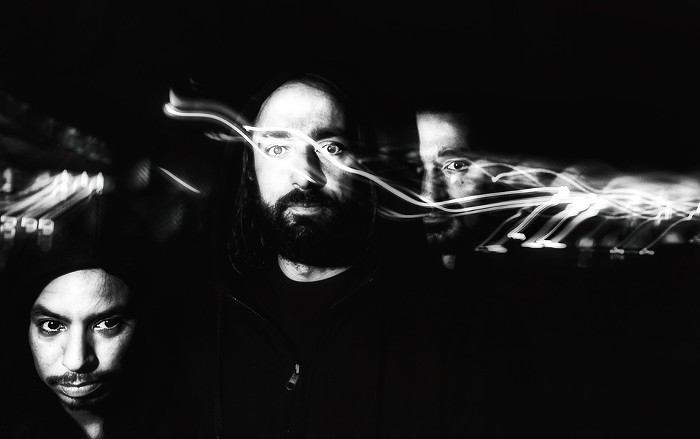EMP (JBL Theater), 367-5483, Wed Mar 28.
Hand in hand with the tragedy of all-consuming obsession and perennial failure comes a sad, beautiful heroism. Like Don Quixote, unrelenting in his pursuit of the unattainable, Dan Cleveland, the subject of the film Driver 23, is simultaneously a moron and a genius, a loser and a champion, at least of his own illogical pursuits. He is in many ways his own unwitting nemesis, aggressively carving out his destiny while invariably botching each and every unhatched vision. Dan Cleveland is a beautiful, twisted person to witness for 72 minutes.
Driver 23 gets so intimate with Cleveland's madness (and it is literally madness--Cleveland himself repeatedly refers to his obsessive, bipolar mindset as a "disorder") that the film could easily be called psychedelic. This low-budget 1998 documentary, shot on video by Rolf Belgum for $700, examines Cleveland's life as a delivery driver and would-be rock star who is unrelentingly driven to cultivate a music career for his "progressive metal" band, Dark Horse. Cleveland lives and breathes this band. Dark Horse, unfortunately, is what one might expect of a band that labels itself that way--four doofy guys with hesher haircuts, technical proficiency in music, and outstanding delusions of grandeur that will eventually take them nowhere but the half-empty Minneapolis bars Dark Horse is already playing. Cleveland is unaware of any of this. He is convinced stardom is his destiny. The delusion is clear in his face when he performs. One can't help but worry a bit for him.
"The cigars are just a Band-Aid over a big, gaping wound," he tells the camera, rat-like in countenance as he puffs away at one obsessively. The cigar has duct tape at the base, through which an air hole has been poked. Cleveland doesn't explain why. But the viewer accepts the tape just as we accept that he is a strange man who swallows 150 percent of the recommended daily dosage of his psychoactive medications, a frightening combination of Zoloft and Prozac. He is overwrought to the point of distraction--the kind of crazy that makes everyone around him crazy just for being in his space.
A dog wrestles a ferret in the foreground as Cleveland lies on an old sofa and rattles off the details of a strange medical condition that almost killed him as a baby. At another point in the film, Cleveland's black wife, Shelly, talks about their marriage as she paints her face completely white in a mirror; it's not until later that Belgum lets the viewer in on the fact that she is a clown. Shelly seems curiously content while describing what appears to be a cold, emotionless union. She compares herself to a snake, because she, like a pet, requires no attention from her husband. When the two are forced into a work-related separation of a year, they barely kiss goodbye, do not hug, and display not even a shred of passion or concern over it. Shelly drives away telling him she'll call when she stops to sleep, and the viewer has to know she's never coming back.
But that's because Cleveland is primarily concerned with one thing: his insufferably bad music. He can't really sing, and he "cat howls," as one band member puts it, "outside of his range" to comic effect. In this regard, the film is like This Is Spinal Tap, only Driver 23 is a real documentary, and is, therefore, far more compelling.
Cleveland is further distracted by an endless stream of ill-conceived but thoroughly diagrammed "projects." As with the main character in American Movie, a documentary about a beleaguered small-town filmmaker, Cleveland's friends and bandmates waver between strained support and inevitable frustration. For example, Cleveland constructs a jerry-rigged weight bench out of what appears to be couch cushioning, pulleys, cables, and a crate that he fills with cement blocks. He also builds a ramp over the long flight of stairs down to his basement, part of a much grander scheme of (again) cables, pulleys, and makeshift support devices, designed to economize the band's equipment load-unload time. The ultimate effect, much to Cleveland's manic chagrin, is total system failure, and the embarrassment of having his bandmates give up on his ingenious invention. They are filmed carrying the heavy equipment the old-fashioned way, while Cleveland, standing at the top of the stairs, protests loudly in hyper-speed.
Midpoint in the film, two members of Dark Horse quit. But Cleveland and the remaining loyal member (Sean, the bass player) are unfazed. Cleveland builds a makeshift recording studio (Jury Rig Studio) in the basement, and the two set out to record Dark Horse's CD, enlisting the services of one of Cleveland's former drummers. Apparently, the drummer hates him. As Driver 23 comes to a close, one can't help but imagine that, in some cases, the means is somehow a far more beautiful thing than the end.


















